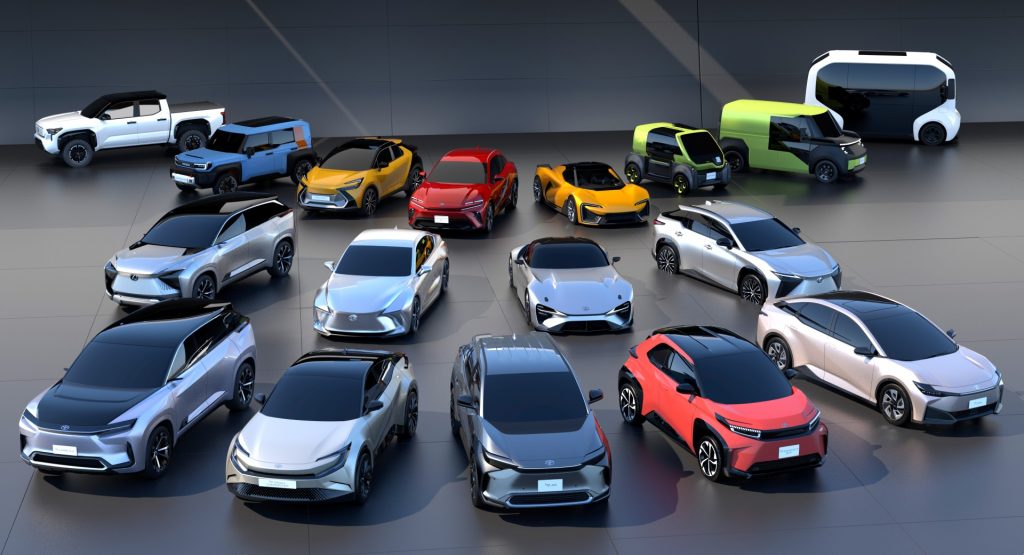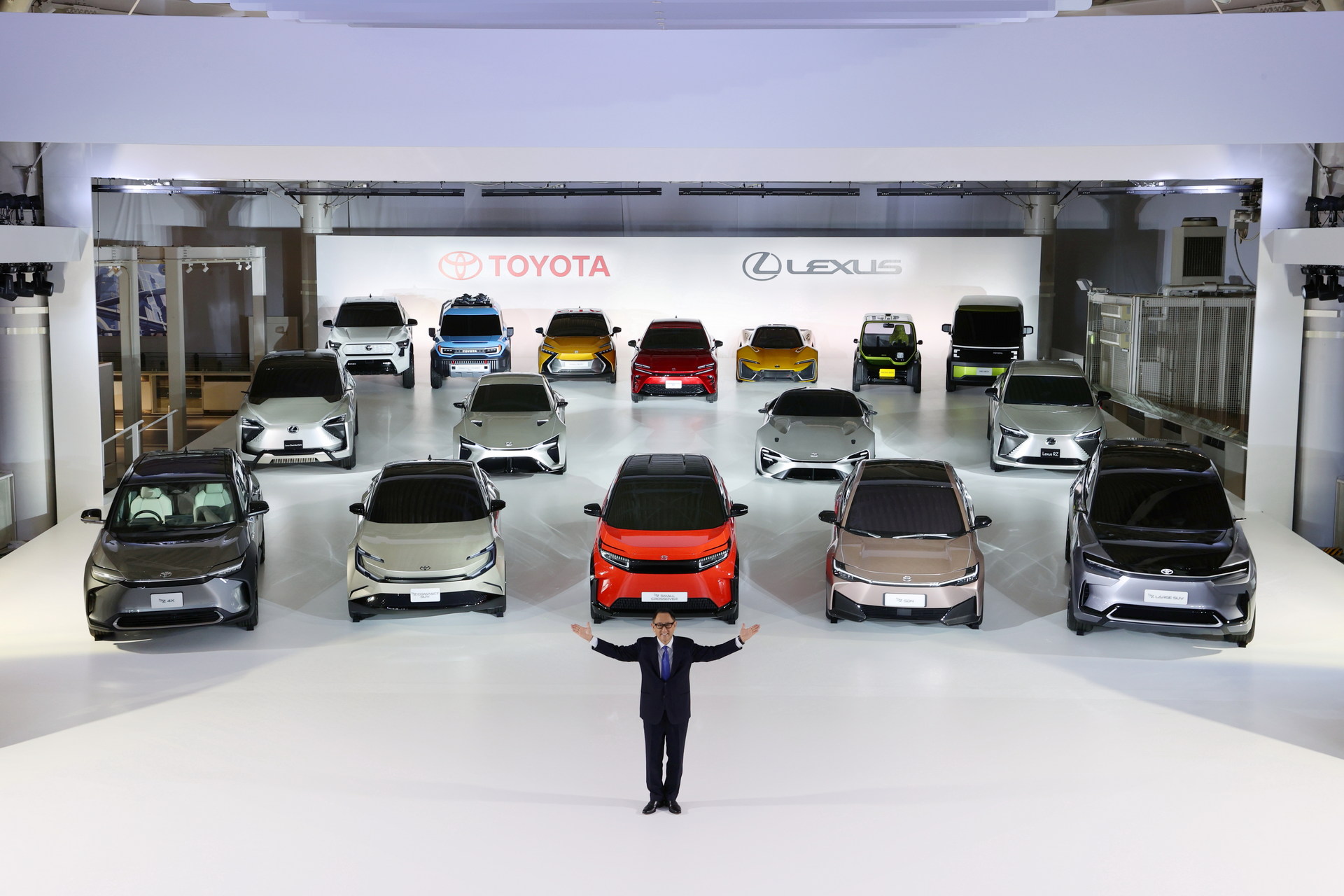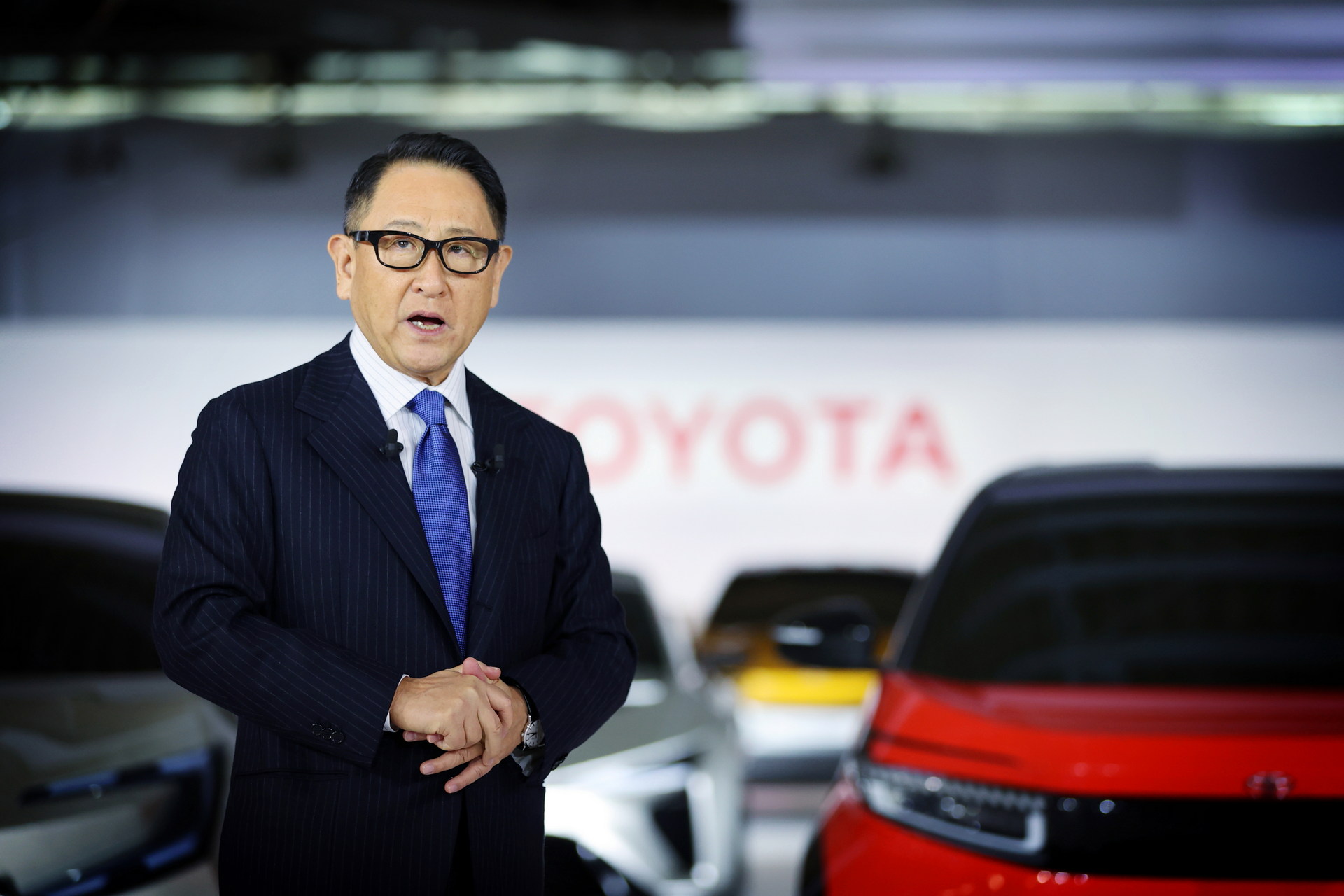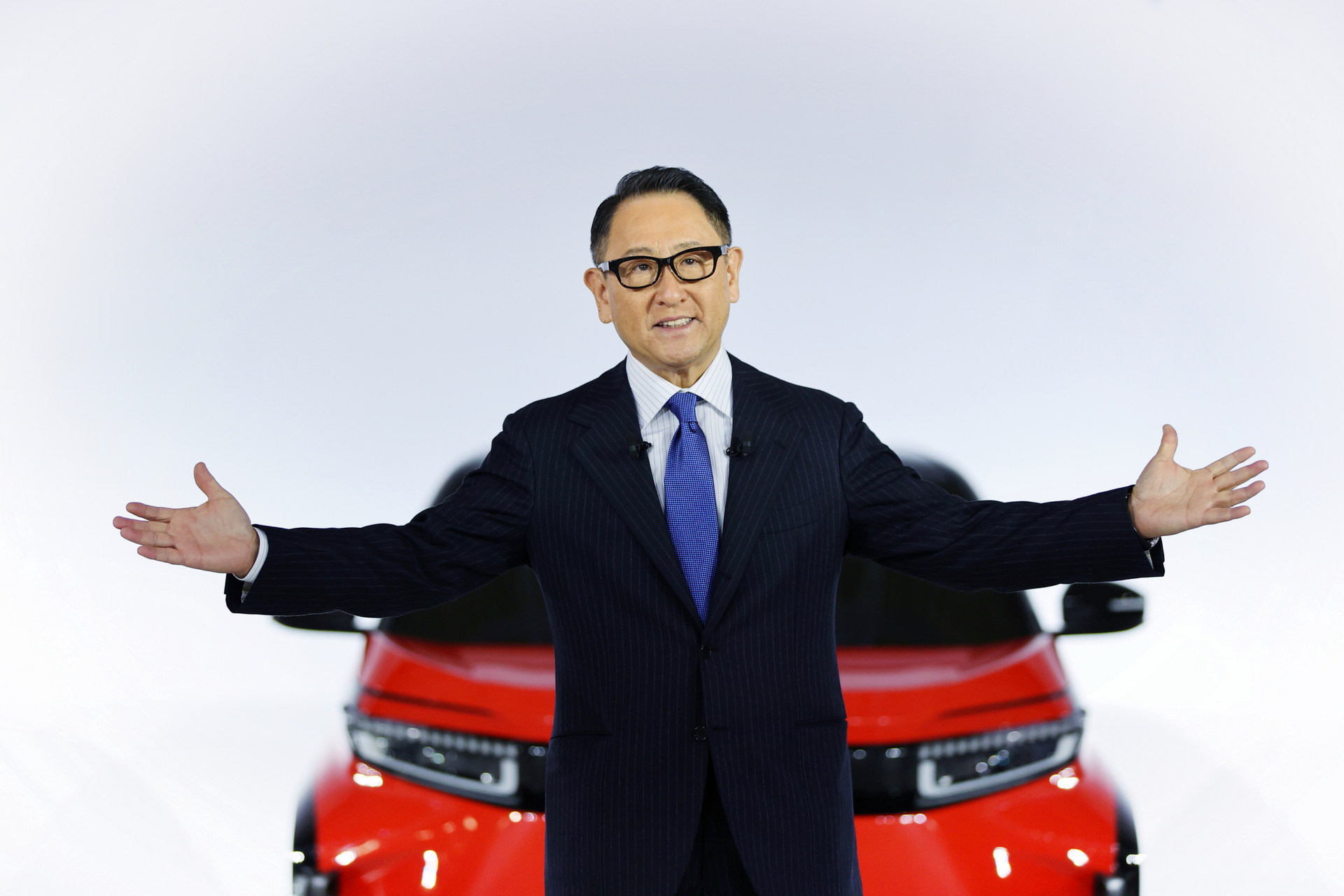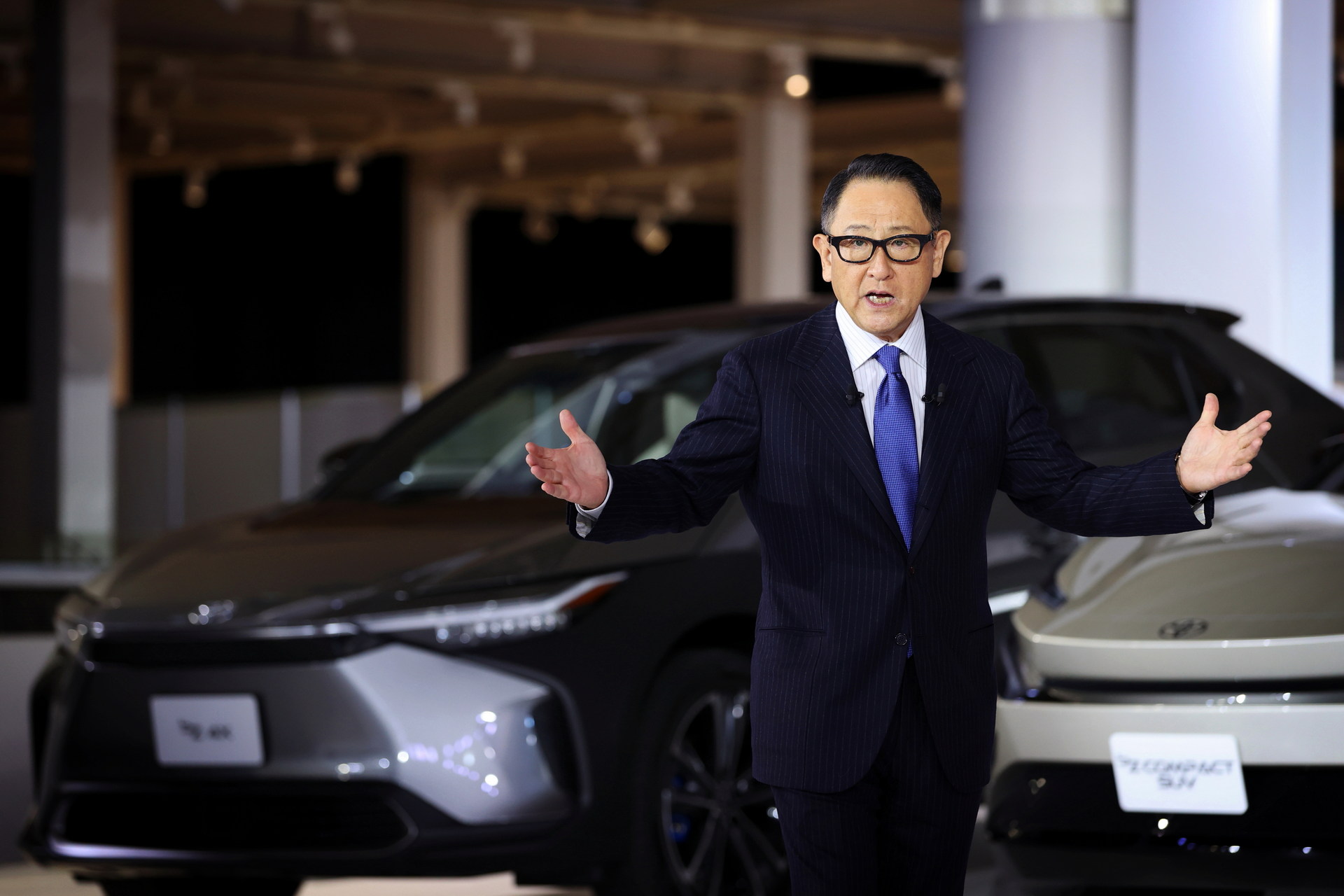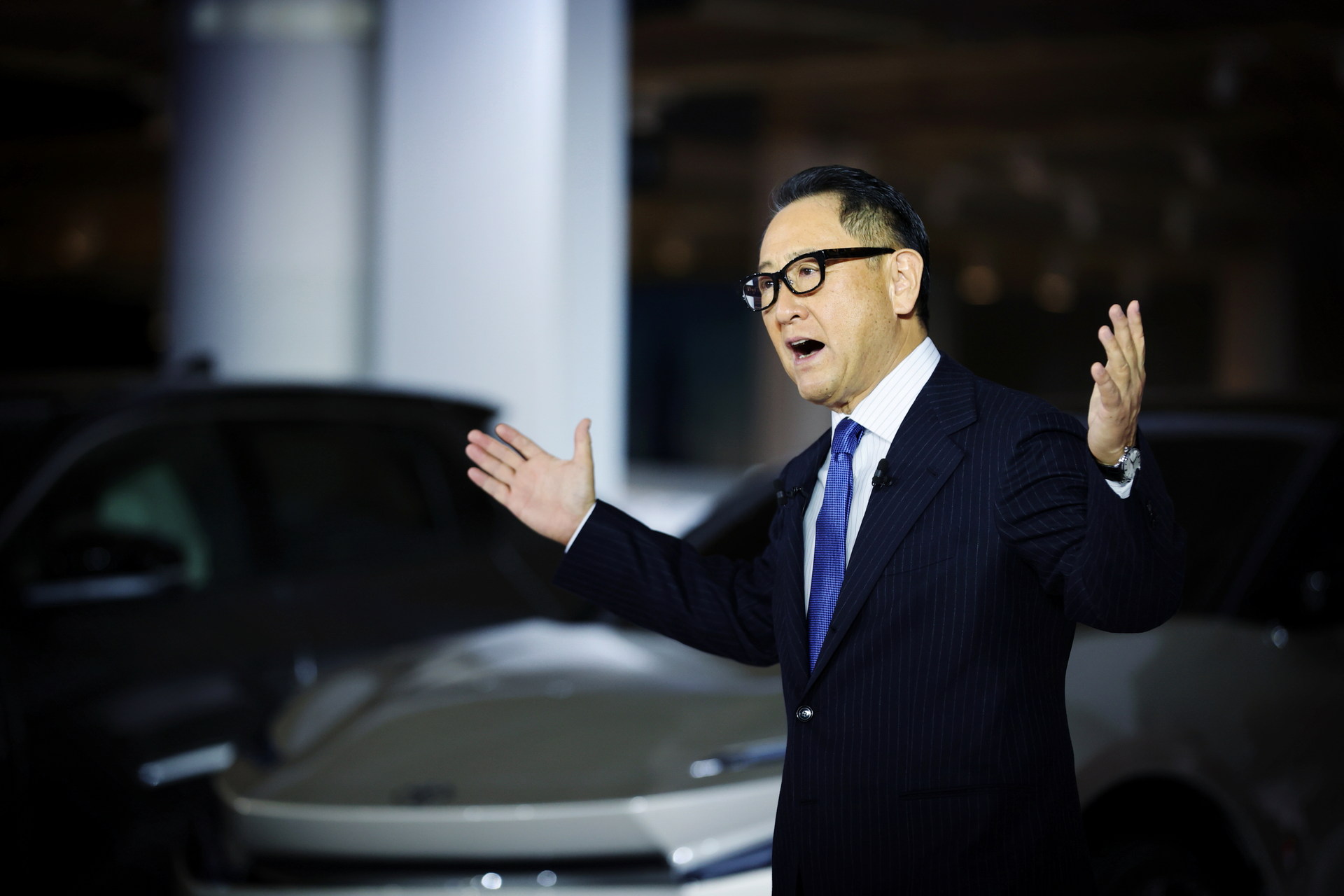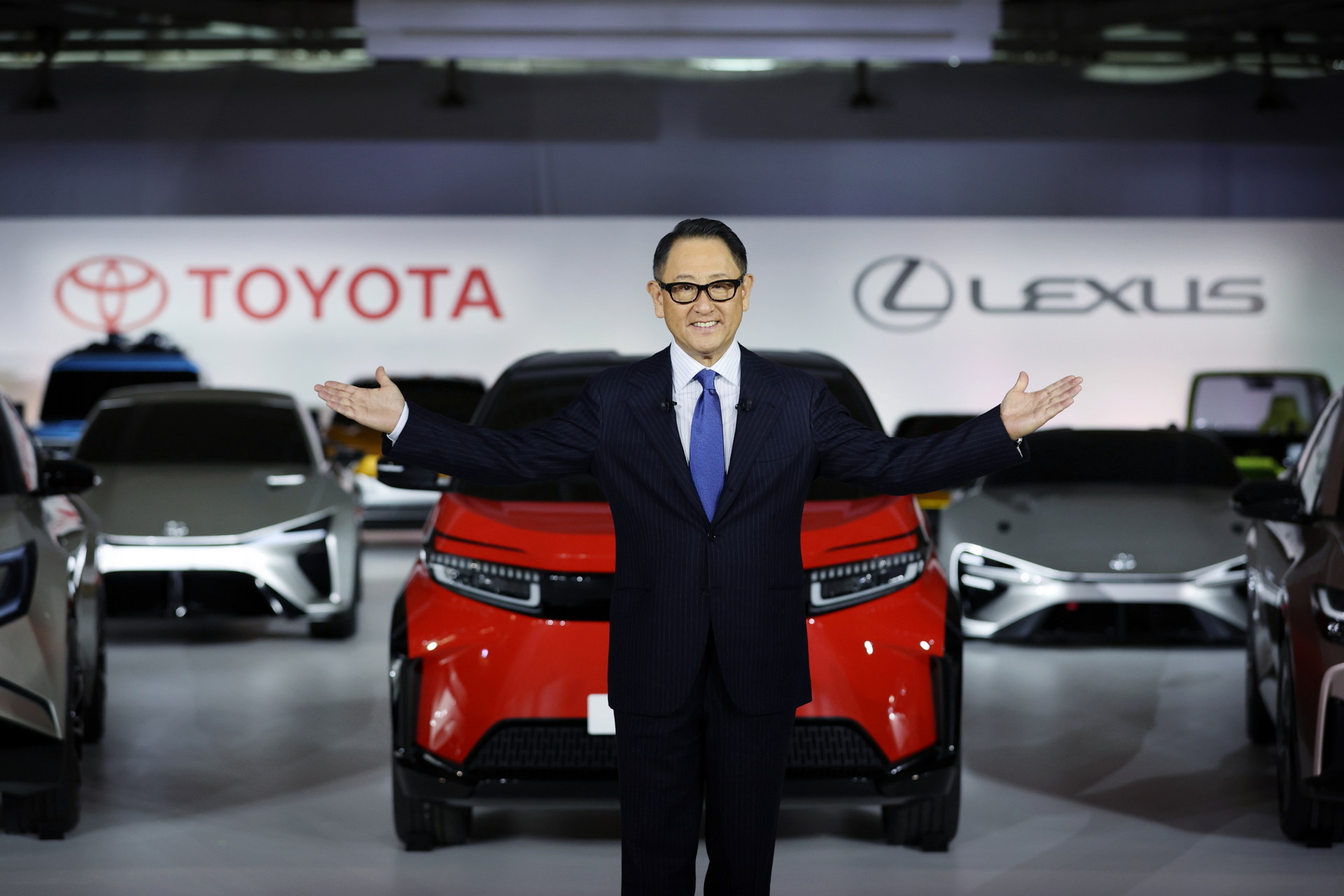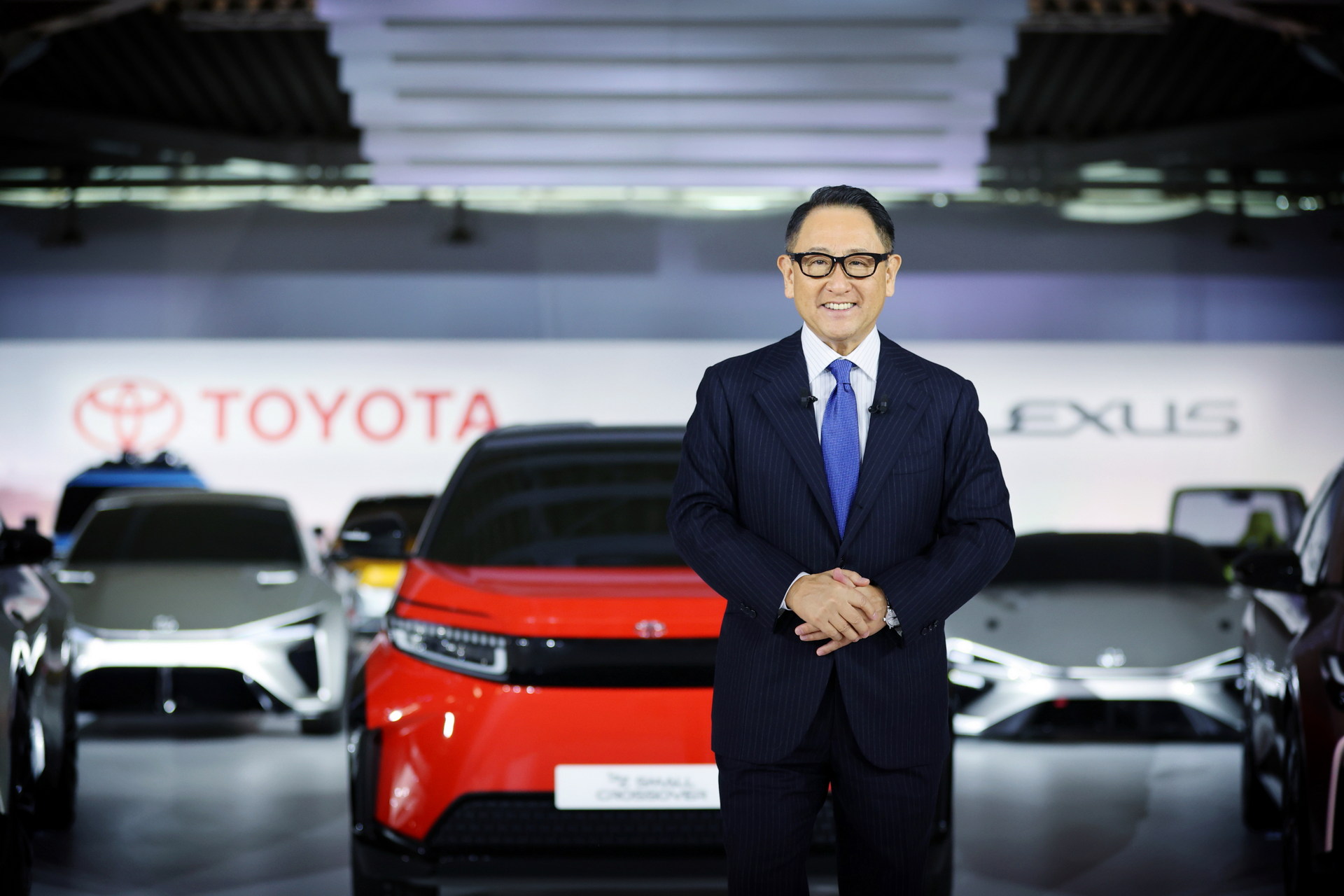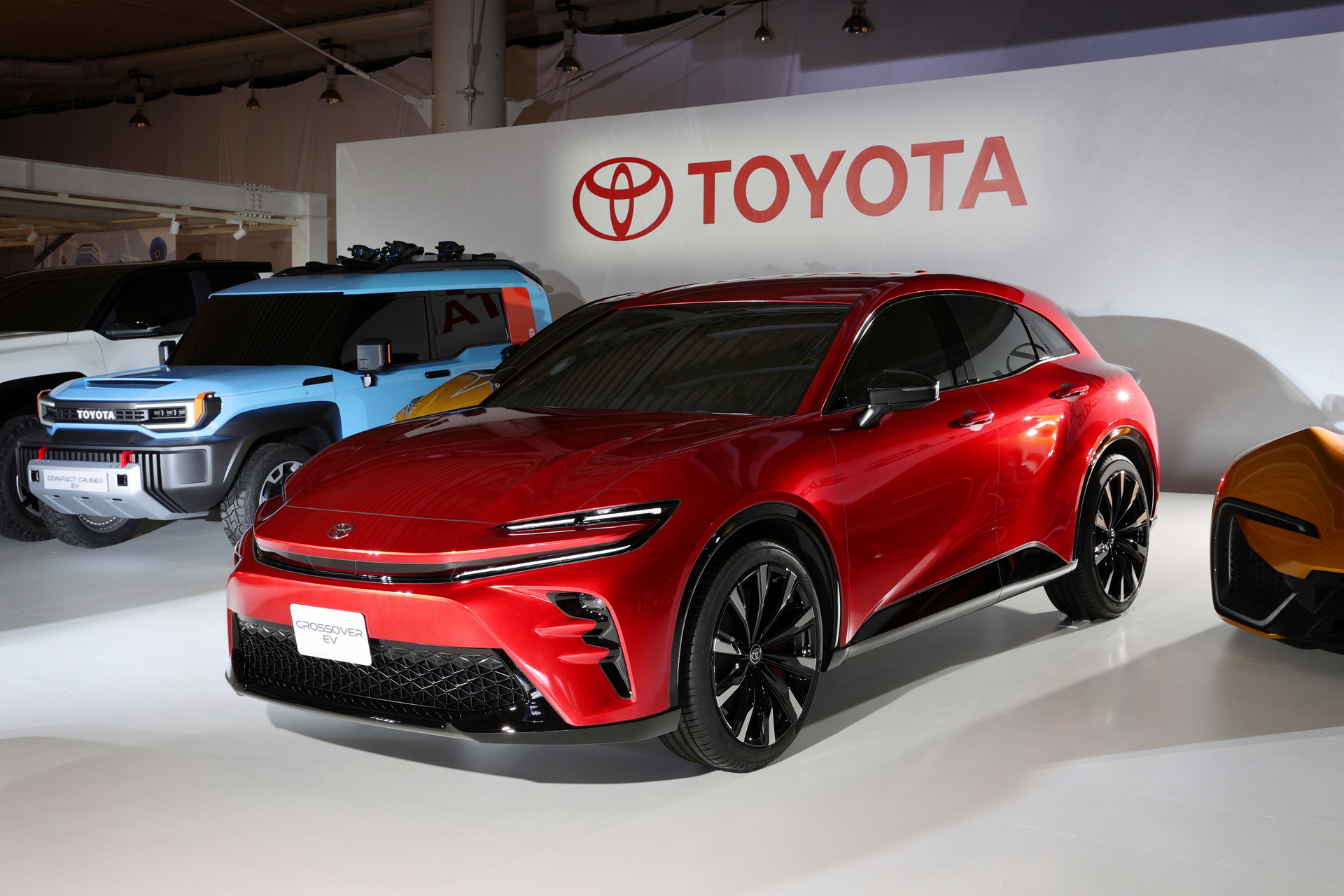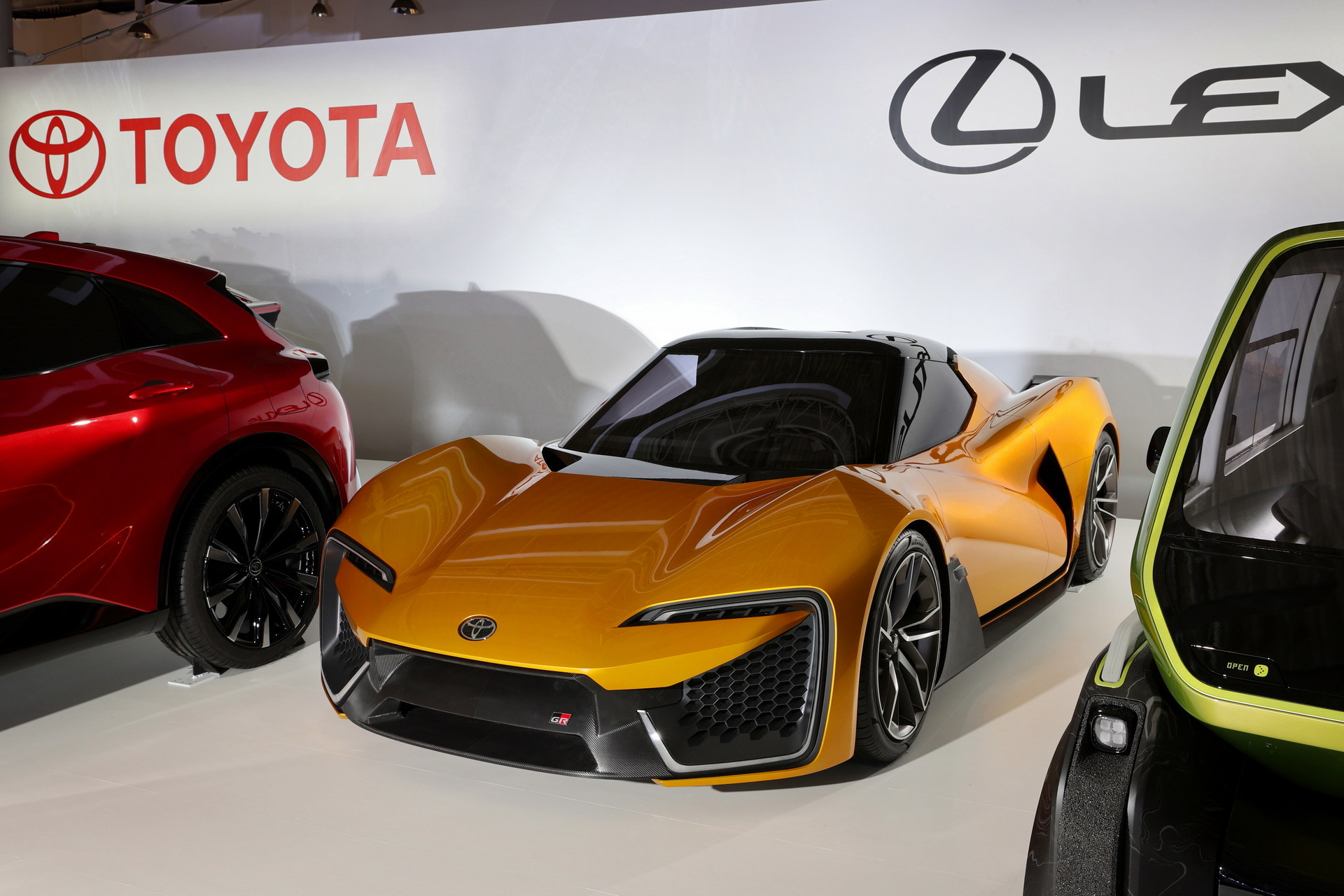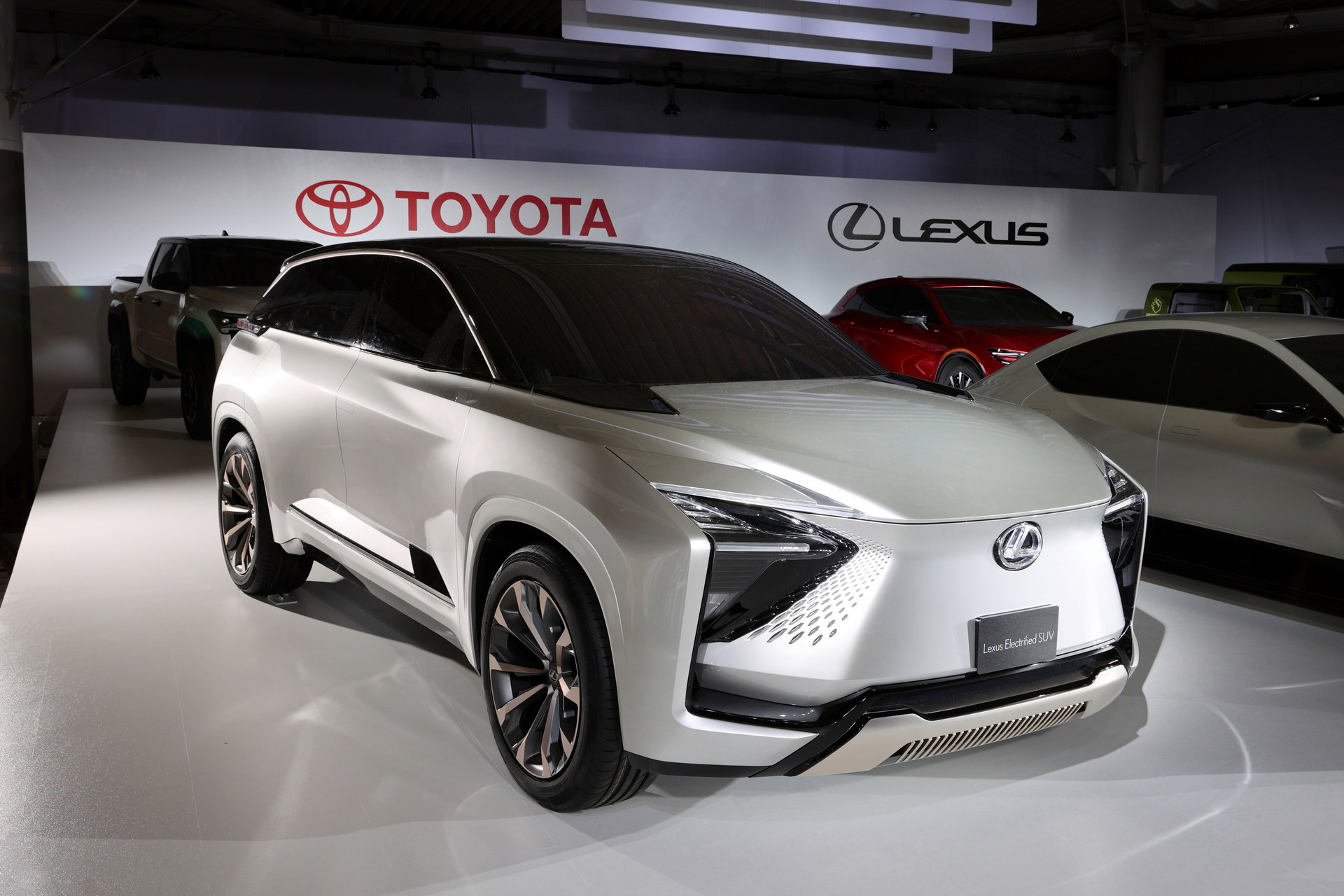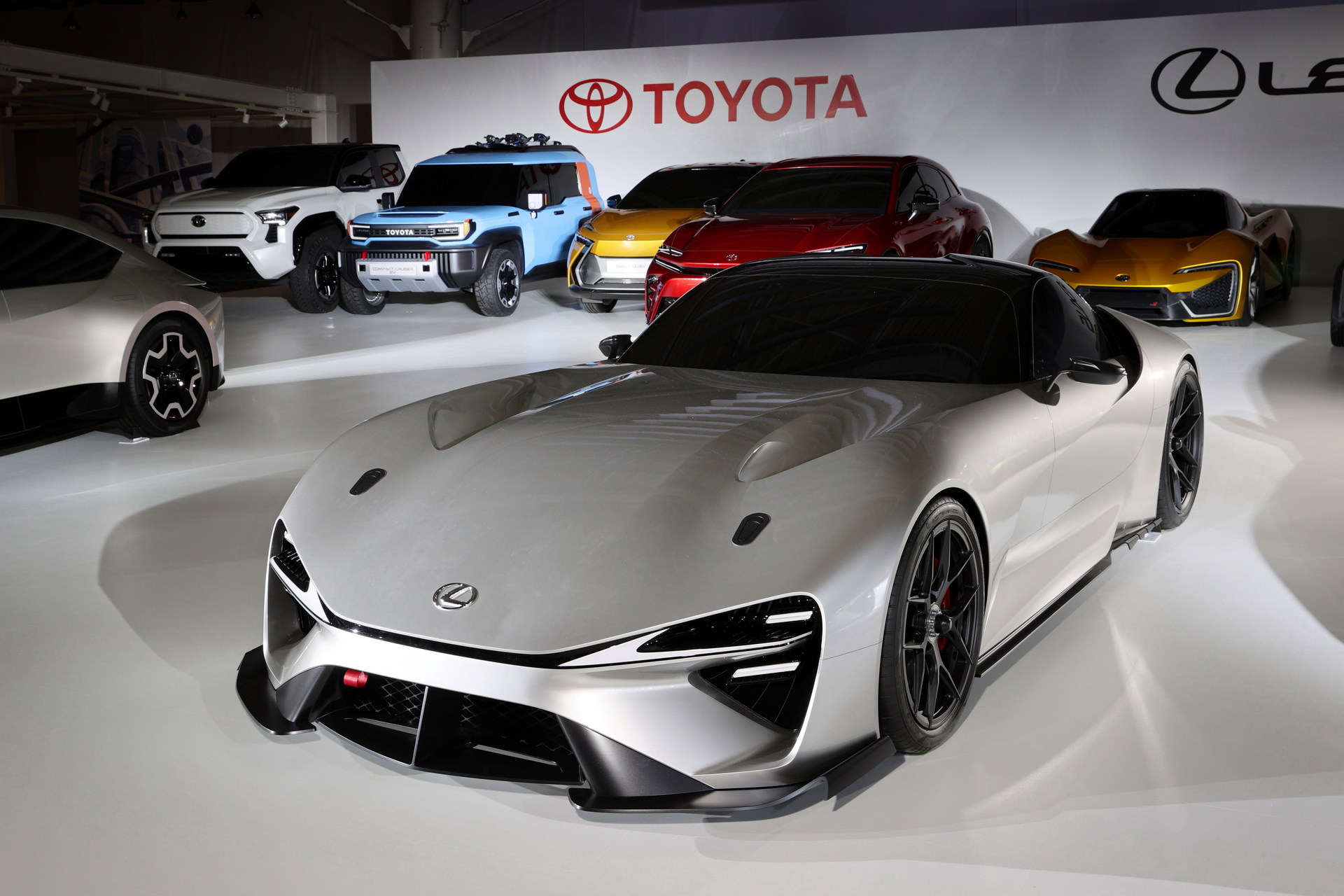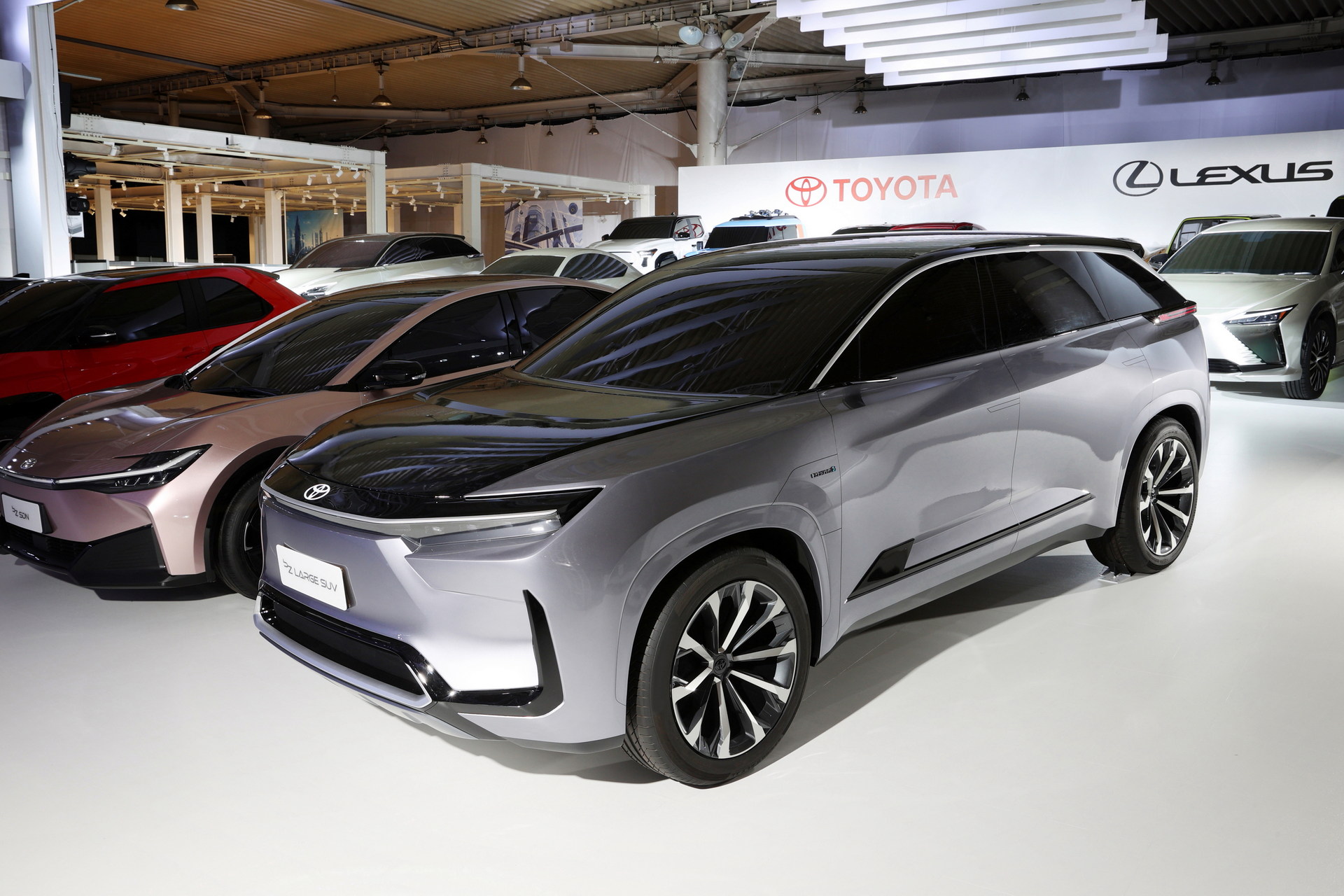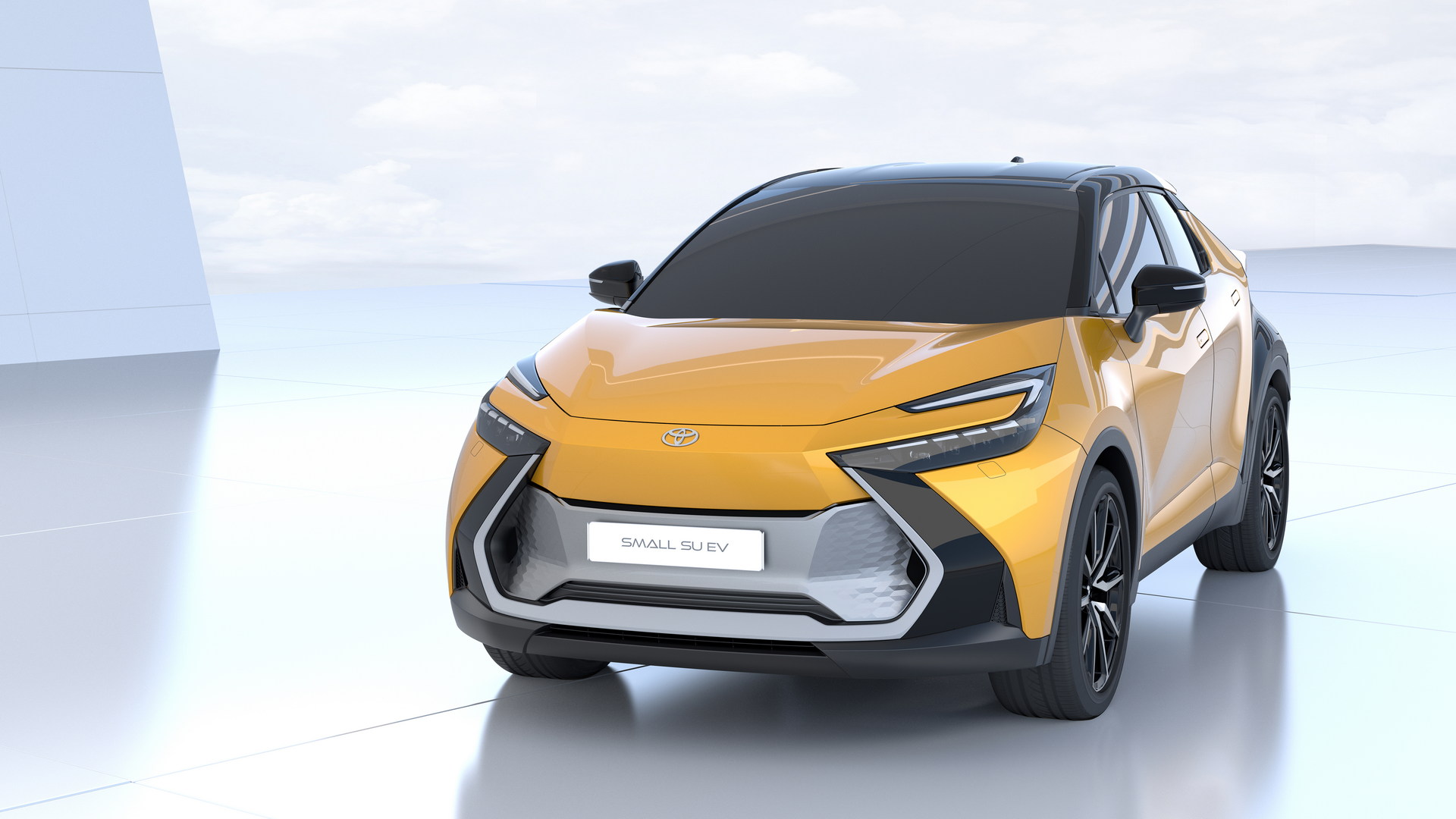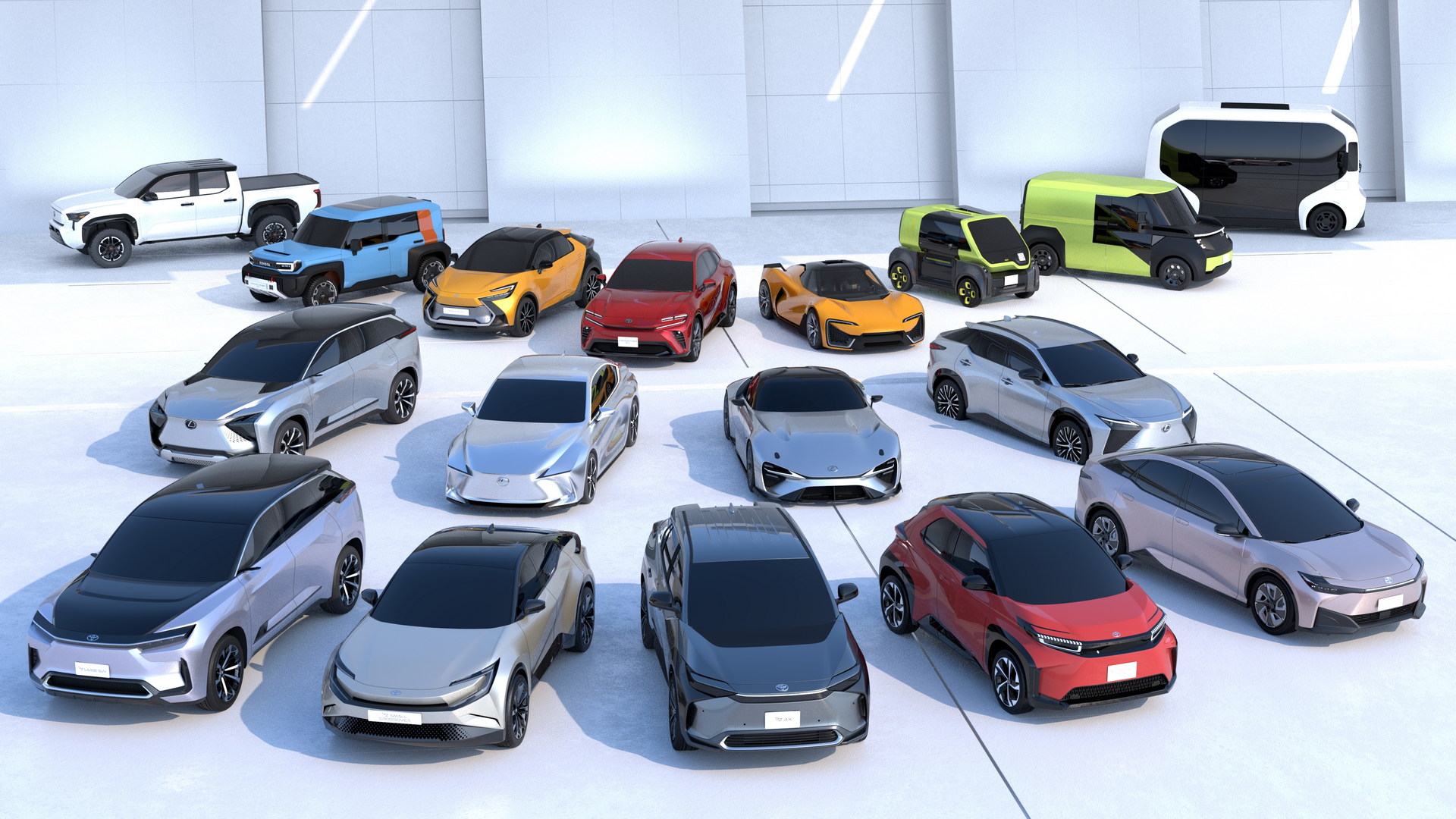During the media briefing on battery EV strategies, Akio Toyoda shocked the automotive world by unveiling 15 fully electric concepts previewing future models of Toyota and Lexus.
What must be the largest rollout of concept cars in history includes everything you can imagine, from city cars, sedans, SUVs of all shapes and sizes to pickups and sportscars. Some of them are based on existing models, but there are also several all-new vehicles based on the EV-dedicated e-TNGA architecture.
The bZ Range Of Dedicated EV Models
Akio Toyoda categorized the vehicles into two types – carbon-reducing vehicles (HEVs, PHEVs, etc) and carbon-neutral vehicles (BEVs, FCEVs, etc), saying that Toyota will do its utmost to realize the latter.
The presentation started with the Toyota bZ range (beyond Zero) of “reasonably priced mass production models” which includes the bZ4X and four new concepts, all based on the e-TNGA architecture. Among those, there is a sporty compact crossover with a coupe-style roofline (bZ compact SUV), a B-SUV (bZ small Crossover) design for Europe and Japan with the goal of a 125 Wh/km power consumption, a high-riding mid-size sedan (bZ sdn) looking like a Tesla Model 3 rival, and a large family-focused three-row SUV (bZ Large SUV).
Lexus’s Own Family Of Fully Electric Models
The “showroom of the future” as Akio Toyoda called it, had a bunch of other EVs hiding behind the curtain. The lineup for the Lexus brand includes its first dedicated EV called the RZ which is the production version of the LF-Z Electrified concept. Then there is a sports battery EV that looks like the spiritual successor of the LF-A with an expected cruising range of over 700 km (435 miles) thanks to solid-state batteries, and an expected 0-100 km/h (0-62 mph) acceleration in the low 2-second range.
Additionally, we saw full-size prototypes of a large SUV (Lexus Electrified SUV) and an unnamed Lexus-branded sporty sedan. The latter also appeared in hatchback form in the official renderings, alongside a 2+2 cabriolet featuring similar styling.
Read Also: Lexus To Go Fully Electric By 2035, Future Range Includes LFA Successor
The Diverse Toyota EVs
Last but not least, Akio Toyoda showed us another series of models calling them “the diverse Toyota EVs”. These include commercial vehicles like an autonomous shuttle bus, a compact van designed for both business and leisure, and a versatile urban EV. The Compact Cruiser EV incorporates styling features from the FJ Cruiser in what could become an off-road-focused five-door EV. Next to it, there is Toyota’s first electric dual-cab pickup which appears to be similar to the Hilux or the Tacoma in terms of dimensions but gets modern design features inspired by the larger Tundra.
The Small SU EV looks like an electric CH-R with a dynamic styling approach, while the Crossover EV is slightly larger and more subtle in terms of exterior design, likely previewing Toyota’s entry into the C-SUV segment. Finally, there is an EV sportscar with mid-engined proportions and a two-seater cabin which could become the future MR2 serving as Toyota’s treat for petrolheads.
Read Also: Toyota To Launch A China-Only Affordable EV Sedan In 2022 Using BYD’s Technology
The Showroom Of The Future
All of the aforementioned vehicles are part of Toyota’s and Lexus’ goal to introduce a total of 30 BEVs in the market by 2030, with the goal of 3.5 million global sales. By 2030, Lexus will have a full lineup of EVs covering all segments, and will become an electric brand in Europe, North America, and China targeting annual sales of 1 million EVs. Global sales of Lexus models will be 100% EVs by 2035.
To achieve those goals, the Japanese company pledged to invest a massive 2 trillion yen ($17.6 billion) for battery production by 2030, which is 500 billion yen ($4.4 billion) more than earlier announcements. Toyota will also invest in different options for “carbon-neutral” models including FCEVs and other types of vehicles running on clean energy. By 2035, both Toyota and Lexus want to be carbon neutral.




